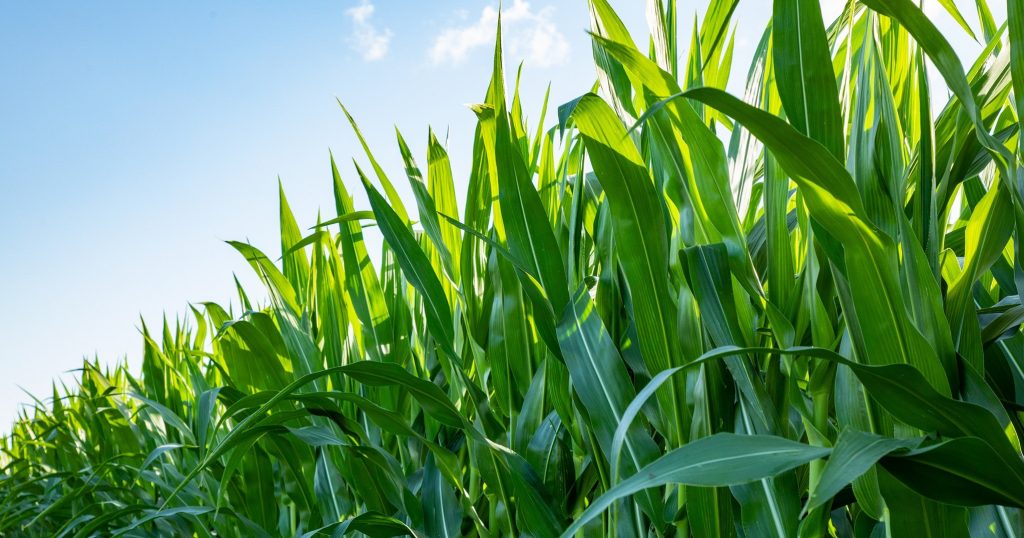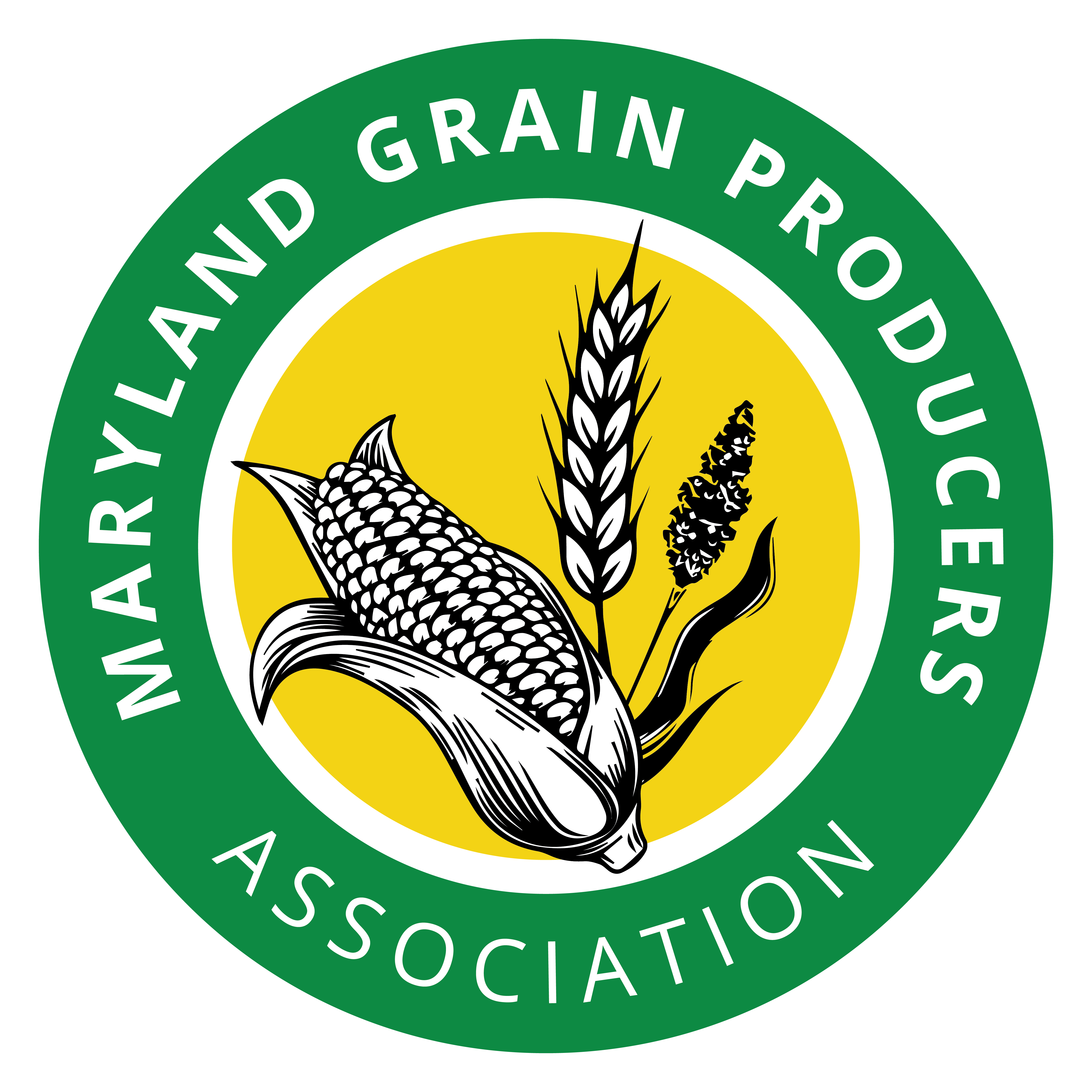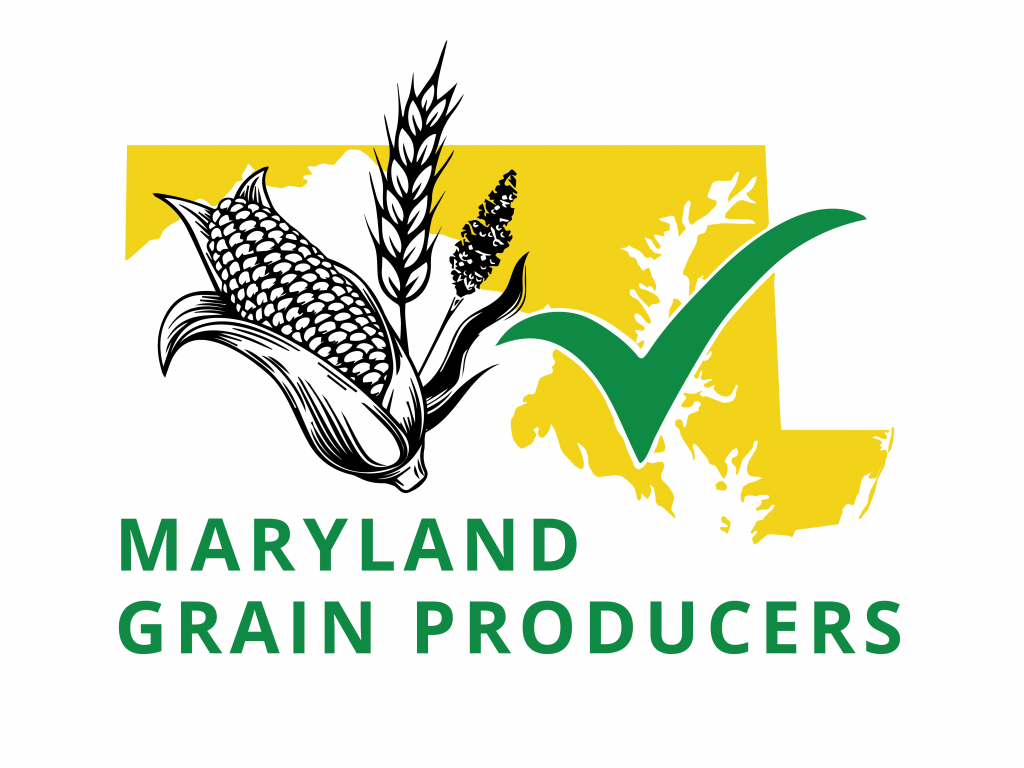
Corn is a summer annual crop therefore it will germinate in spring or early summer and mature by autumn in the same year. Farmers begin preparing planting beds mid-March. In Maryland, farmers take advantage of an affordable organic and nutrient-rich plant food, poultry litter. Farmers will spread this on their field as the government’s nutrient management approved plan allows.
Planting season typically does not begin until late April, it all depends on the weather. Corn prefers a soil temperature of 50 degrees Fahrenheit to allow for proper germination. Corn is typically planted in 30-inch rows with a tractor and planter as shown below. Seeds will germinate in 5 to 12 days, watch corn germinate here. During the summer corn grows with a lot of rain and sunlight. In July and August corn develops tassels near the top of the stalk, this is considered the “male” flower. Silk begins to form, which is the “female” flower lower on the stalk. The silk is very similar to the hairs on sweet corn. These silks develop on the corn cob and each silk corresponds to a single kernel. Each kernel must be pollinated and fertilized to completely fill the ear. Watch a time-lapse of corn growing in Nebraska here.
Late September to October and on, corn beings to dry out. Once the kernel reaches 18% moisture or less, farmers begin harvesting corn with a combine. During the harvesting process, kernels of corn are taken off the cob. The combine collects the kernels while the stalk, husk, and cob exits the combine and is put back on the field, watch the video below to learn more by the MN Millenial Farmer. The stalk, husk, and cob are known as fodder. Fodder can be baled and used for animal bedding or organic matter or the fodder can be left on the field for microorganisms to enjoy.
Facts about Corn:
- One plant typically produces one or two ears of corn.
- An ear of corn has an average of 16 rows and 800 kernels.
- A pound of corn consists of approximately 1,300 kernels.
- An acre (about the size of a football field) of corn yielding 100 bushels to the acre, produces 7,280,000 kernels.
- A bushel of corn is 56 pounds.
- Corn has over 4,000 uses – fuels, abrasives, solvents, charcoal, animal feed and bedding, oil, starch, solvents, chips, diapers, syrup, etc.
- A corn kernel is 61% starch, 19.2% feed, 3.8% oil, and 16% water.

